All issues

Volume 49, Issue 12
Displaying 1-13 of 13 articles from this issue
- |<
- <
- 1
- >
- >|
Transplantation and Regenerative Therapy for Diabetic Patients : The Present Status and Future Perspective
-
N. Yoshioka2006 Volume 49 Issue 12 Pages 893
Published: 2006
Released on J-STAGE: January 19, 2009
JOURNAL FREE ACCESSDownload PDF (126K) -
M. Matsuhisa, K. Kato, Y. Yamasaki2006 Volume 49 Issue 12 Pages 895-897
Published: 2006
Released on J-STAGE: January 19, 2009
JOURNAL FREE ACCESSDownload PDF (546K) -
S. Matsumoto2006 Volume 49 Issue 12 Pages 899-901
Published: 2006
Released on J-STAGE: January 19, 2009
JOURNAL FREE ACCESS -
S. Yamada, I. Kojima2006 Volume 49 Issue 12 Pages 903-905
Published: 2006
Released on J-STAGE: January 19, 2009
JOURNAL FREE ACCESSDownload PDF (224K) -
1) Cardiac Regenerative Therapy for Ischemic Heart DiseaseH. Kanazawa, K. Fukuda2006 Volume 49 Issue 12 Pages 907-910
Published: 2006
Released on J-STAGE: January 19, 2009
JOURNAL FREE ACCESSDownload PDF (351K) -
2) Regenerative Therapy for StrokeO. Honmou, K. Houkin2006 Volume 49 Issue 12 Pages 911-913
Published: 2006
Released on J-STAGE: January 19, 2009
JOURNAL FREE ACCESSDownload PDF (304K) -
3) Regenerative Therapy for Peripheral Vascular DiseasesA. Nakagawa, R. Morishita2006 Volume 49 Issue 12 Pages 915-917
Published: 2006
Released on J-STAGE: January 19, 2009
JOURNAL FREE ACCESSDownload PDF (478K)
Original Article
-
Azuma Kanatsuka, Koichi Kawai, Koichi Hirao, Mariko Oishi, Hirofumi Ta ...2006 Volume 49 Issue 12 Pages 919-927
Published: 2006
Released on J-STAGE: January 19, 2009
JOURNAL FREE ACCESSTo clarify the actual usage of oral hypoglycemic agents (OHA) and insulin preparations (INS) and their effectiveness on glycemic control in patients with type 2 diabetes mellitus in Japan, we analyzed clinical data collected from 34 institutes using CoDiC®, an electronic system for diabetes data collection and management. In 15,553 type 2 diabetic patients registered with CoDiC® from January to July 2003, 36% were treated with OHA monotherapy, 33% with OHA combination therapy, 11% with INS plus OHA combination therapy, and 20% with INS monotherapy. A cross-sectional survey of 14,099 patients whose HbA1C data had been input CoDiC® showed that glycemic control was excellent or good in 29%, fair in 49%, and poor in 22%. Among those undergoing OHA monotherapy control was the poorest in patients treated with sulfonylureas. It was poorer in patients treated with OHA combination therapy than in patients undergoing OHA monotherapy. Patients undergoing INS plus OHA combination therapy had the poorest glycemic control. Glycemic control was poor in 32% of those undergoing INS monotherapy. In a clinical setting, obtaining ideal glycemic control in many type 2 diabetic patients is therefore difficult with currently available pharmaceutical agents.View full abstractDownload PDF (506K)
Case Report
-
F. Jo, T. Yonemoto2006 Volume 49 Issue 12 Pages 929-933
Published: 2006
Released on J-STAGE: January 19, 2009
JOURNAL FREE ACCESS -
N. Koriyama, K. Nagata, Y. Tokitou, A. Yamaguchi, M. Nakazaki, C. Tei2006 Volume 49 Issue 12 Pages 935-940
Published: 2006
Released on J-STAGE: January 19, 2009
JOURNAL FREE ACCESS -
Kenichi Suda, Toshihiko Hashimoto, Tomoaki Eto2006 Volume 49 Issue 12 Pages 941-945
Published: 2006
Released on J-STAGE: January 19, 2009
JOURNAL FREE ACCESSA 55-year-old man treated with oral metformin for type 2 diabetes mellitus was admitted for nausea, and hematemesis. From 4 days earlier, he had a history of alcohol abuse. He was diagnosed as having lactic acidosis by findings of metabolic acidosis (anion gap 43.3 mEq/l, pH 6.850), elevated serum lactic acid (250 mg/dl) and pyruvic acid (2.68 mg/dl). He also had hepatic and renal dysfunction. The compound combination of metformin accumulation, alcohol abuse, liver and kidney dysfunction, and inhibition of lactic acid metabolism apparently caused this severe lactic acidosis, which was ameriorated by hemodialysis. Liver and kidney dysfunction improved after 15 days of treatment. He was discharged from the hospital without sequela. Because lactic acidosis may lead to acute multiple organ failure, rapid diagnosis and intensive treatment including hemodialysis are necessary.View full abstractDownload PDF (326K) -
Y. Kiuchi, G. Hanai, J. Oya, S. Jimba, N. Tanaka, T. Kasahara, T. Wasa ...2006 Volume 49 Issue 12 Pages 947-951
Published: 2006
Released on J-STAGE: January 19, 2009
JOURNAL FREE ACCESS
Co-medical
-
Y. Nishiyama, K. Suzuki, K. Okahata, Y. Eino2006 Volume 49 Issue 12 Pages 953-958
Published: 2006
Released on J-STAGE: January 19, 2009
JOURNAL FREE ACCESS
- |<
- <
- 1
- >
- >|